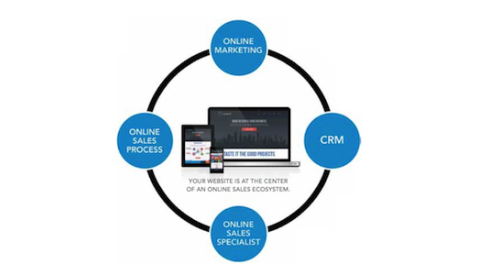If you’re a home builder facing a marketing problem, Facebook can help. It can help increase online traffic, get more people to your model home, tell you how much you should pay for your next development, and more. The incredible part is that it can do all these things for a fraction of the cost of other marketing channels. That’s why Facebook’s platform is the largest advertising game changer since Google invented Adwords.
But the clock is ticking. As more companies discover the power of this social media platform, demand and cost will increase. Early adopters of Adwords used to spend 10 cents per click on key phrases such as “new homes”; now it’s $3 to $10 or more depending on your market. Facebook ads will likely follow a similar pattern. Here’s an overview of the various types of Facebook ads and how best to use them.
Ads 101 for Home Builders
Traffic-driving ads have one goal: getting people to visit a website. The ads come in different content packages: single photo, multiple photo, and video. If you already have a good sense of the audience you’re targeting and what the website or landing page that you send people to should look like, this works well.
Engagement ads prioritize engagement with content: viewing an image in detail, commenting, liking, sharing. If you include a link in your description, you can also get traffic to your site, but Facebook will prioritize engagement that stays on Facebook. If you want hundreds of “likes” or “loves” at a low cost, this is the one for you.
Video views deliver your videos to those who are most likely to watch or engage with them. Caution: Facebook considers 3 seconds of viewing time to be a “view,” so don’t get too excited when the view count skyrockets. You’ll need to dig deeper to see how many people watched a significant portion of your content. Many videos are watched without sound, so be sure to use Facebook’s caption option.
Lead-generation ads get marketers excited, but can also cause frustration for your sales team. These ads allow prospects to directly share their contact information with you from Facebook and drop it into your CRM without ever visiting your website. It’s not uncommon to see an average cost per lead of less than $5 from lead-gen ads. The challenge is that because Facebook makes it so easy to share information (it will auto-populate the form with your Facebook profile data) people often don’t realize they are sharing information. Remember: High quality is just as important as high quantity.
Taking Action With Ads to Solve Common Home Builder Challenges
Here are some suggestions for ways to make those ads work to solve common problems.
1/ How do we attract more website traffic?
Traffic-driving ads are what Facebook does best. You’ll want to mostly focus these around traffic (70 percent), engagement (20 percent), and video view campaigns (10 percent). Your traffic ad will create the initial visit to your site where leads can learn more about what you offer. You can then remarket to those leads using a small bit of code called a Facebook pixel, which is easy to install and will allow you to focus your engagement and video campaigns on those who have already been to your site. For remarketing campaigns, you should create content that differs from the initial traffic ad. (Testimonials or information on your design studio work well for remarketing.) The average cost is likely to be below $1 per click.
2/ How do we draw more visitors to models?
For this, engagement ads are best. Run your ads from Thursday through Sunday, when walk-in traffic is likely to be heaviest. Use less salesy language; phrases like “explore our decorated model” tend to do well. As the ads run and people like or comment on them, it builds a strong sense of social proof around the community. If someone sees an ad with 100 thumbs-up and heart icons, it will make the final cut because people don’t want to miss out on something so seemingly popular.
Consider uploading your CRM database to create a targeted list of people to remarket to using traffic, engagement, or video views. Facebook calls this a “custom audience” and allows you to speak directly to those who have Facebook accounts even if they’ve never visited your website. Incredibly, you can target someone who only filled out a registration card at the model home if they have a Facebook account.
3/ Should I buy those lots?
Facebook can help you here, too. Traffic ads don’t have to send people to your website. They can send people to any website, including to an online survey. Run a traffic ad requesting feedback from people in the area that you’re considering. Provide incentives: Offer a drawing for a gift card to those who participate, and then send the traffic to a simple online survey asking them what you need to know. SurveyMonkey is a great low-cost option. For a couple hundred bucks of ads, you’ll get hundreds of responses and a better sense of market demand.
4/ How do we build interest in a new community?
Lead-generation ads are perfect for Coming Soon communities and increasing your interest list. You don’t need to build out a new community page on your website because the prospect submits contact information without ever needing to leave Facebook. Less visual content will be needed to create an ad that piques prospects’ interest. The longer time frame before the community launches offers a chance to see who responds to lead-nurturing efforts, such as email marketing, mass texting, and video email, without the need to instantly call back everyone who expresses interest.
No matter what sort of advertising or marketing challenge you face, a solid understanding of Facebook ad types and how to apply them will help you offer impressive solutions for far less than you’d expect.











